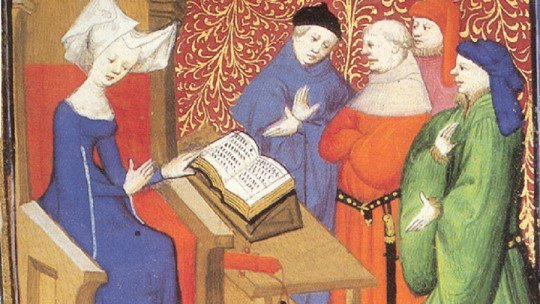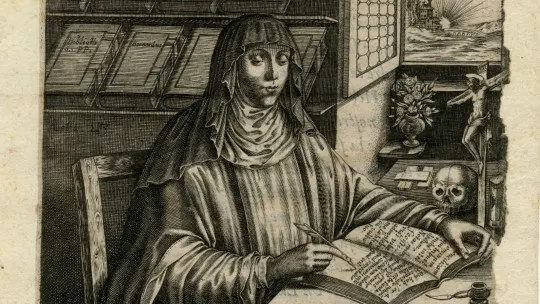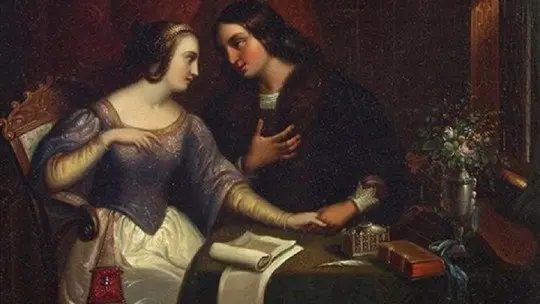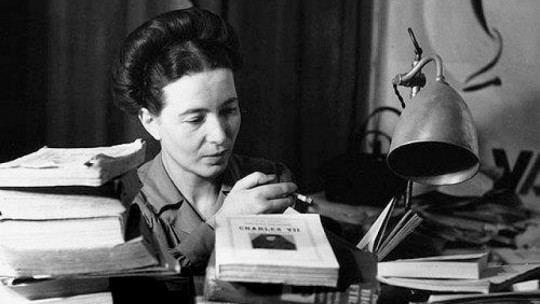As often happens with most women artists or intellectuals, Christine de Pizan’s work quickly fell into oblivion It was the year 1430 and Joan of Arc was burned in the square of Rouen; That same year, a woman retired from a monastery in Poissy dedicated a hymn to the Maid of Orleans that exalted her figure and reinforced her reputation as a brave woman.
No, this writer was not a nun. She came from a wealthy family in Venice and she had spent her entire existence in France, earning her living with the fruit of her pen. Christine de Pizan is, therefore, the first woman in Europe of whom there is evidence that she was able to fully dedicate herself to the craft of writing (and with which she obtained, by the way, a large income).
But Christine de Pizan was not only a writer; has gone down in history as one of the clearest antecedents of modern feminism , as he publicly defended women against the continuous humiliation that their sex received from clerics and other “scholars.” Your book The city of ladies It is a true apotheosis of the intellectual and moral capacities of women, which differ in no way from those of men.
Brief biography of Christine de Pizan
Currently, fortunately, the story of this woman, who had remained in the shadows for a long time, is being recovered. Already in the 18th century, the first enlightened women claimed her as a true intellectual and an example to follow.
How did a woman in the 14th century become able to dedicate herself fully to literature? This is an unusual case, with very little precedent in history. Let’s see what the life of Christine de Pizan was like, the first woman in Europe who made a living from her writing
A humanistic education
You can say that Christine de Pizan was lucky, very lucky. Her father, Tomasso da Pizzano, was a professor at the University of Bologna, one of the most advanced institutions of the time. Tomasso was a true humanist who soon realized that his little Christine had unusual abilities that needed to be stimulated. So, da Pizzano gave the girl the best tutors, who taught her history, philosophy and languages ; among them, Latin, lingua franca and scholar of the moment.
The Pizzano family was originally from Venice. Christine was born there in 1365, but the city of canals would have little role in her life. When the girl is 4 years old, Tomasso moves his family to France, since he had been hired by Charles V the Wise (1338-1380) as a court astrologer, and changes his surname to Pizan. Not only was the position, well-paid and entirely desirable, the reason why Tomasso decided to settle in France. He knew that Charles V was one of the most learned kings of his time, whose library overflowed with humanist volumes that Tomasso knew would do his daughter much good.
And, indeed, it was. When Christine arrives in Paris, she is absolutely amazed by the splendor of the French court. The Royal Library, the room in the Louvre that the monarch designated in 1368 to house her magnificent collection of books and which will eventually house more than a thousand manuscripts, exerts even greater fascination on her.
Christine receives from the king the privilege of entering and leaving the library whenever she wants In this way, the girl spends long hours in the Louvre room, reading and memorizing all the wisdom that she later, once she became a writer, would capture in her works.
Adolescence, marriage and widowhood
In the autobiographical texts that Christine wrote, she repeatedly comments on how happy she was during her childhood in Paris and how very close she was to her mother, who, according to herself, raised her “with her breasts”; That is to say, she abstained from the practice, so common at the time, of handing the girl over to a wet nurse.
The education that Christine had received was truly unusual for a young woman of the time. However, When she reached adolescence, she was awarded the destiny of all women from a good family: marriage The lucky one was Étienne du Castel, a young secretary of the court who was then 24 years old and who belonged to a noble family from the Picardy region.
Against all odds, and despite the fact that Christine had not chosen her husband, the marriage was exceptionally well-matched and happy, to the point that, when Étienne died ten years later, victim of an epidemic, Christine was plunged into deep sadness. .
Two years before Étienne, in 1387, Tomasso da Pizzano, Christine’s father, had died. The result was that, at twenty-five years old, the young woman found herself alone, with three children, a niece and a mother to feed. How could a woman in her situation get ahead without remarrying?
The writer Christine de Pizan is born
Indeed; It was very difficult for a widow with a small inheritance to survive without remarrying. But Christine wasn’t willing to go through that. Maybe she was out of respect for Étienne’s memory, or perhaps to live fully without being tied to anyone; the truth is The widow never remarried and began writing to bring home money
At first, Christine composes love poems inspired by her husband and the pain it causes her to no longer have him by her side. These poems enjoy great success among the French nobles, and Christine’s name begins to spread by word of mouth. But it was the year 1404 that marked a before and after in the professional career of Christine de Pizan: the Duke of Burgundy (1342-1404), the brother of King Charles V, commissioned the writer to write a biography of the monarch.
Charles V the Wise had died in 1380, the same year Christine married. Inspired by the memory of that king who had done so much for her and for her family, Christine dedicated her work “Book of the Acts and Good Customs of Charles V” to him, her first great success and for which she received numerous fee.
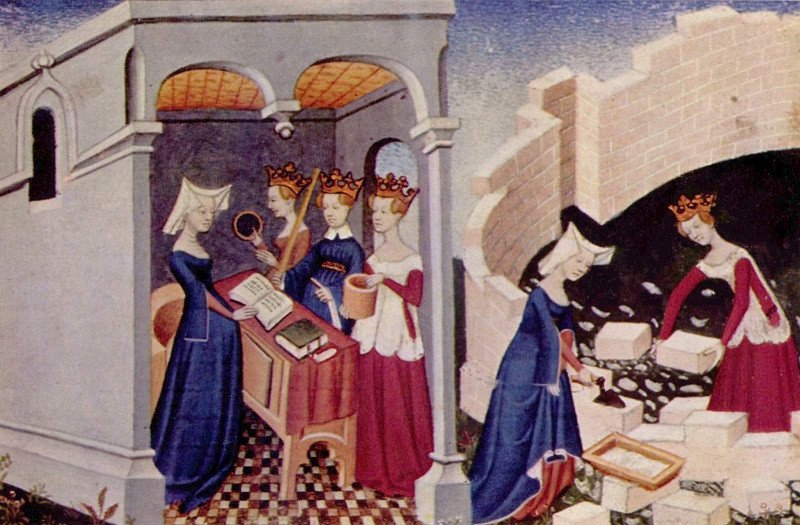
From then on, the young woman’s professional career was on the rise. Christine had her own scriptoriumwhere she herself had her books copied and illuminated It is estimated that, in the thirty-nine years that she was active as a writer, she produced no less than 3 books a year. Christine de Pizan had become the first European woman to make a living from her literature, and also the first “publisher.” Her books were coveted by all the French nobility; It is known that she used to send copies of her texts, carefully miniaturized and bound, to her admirers, among whom was the Duke of Berry (1340-1416), who had numerous copies of the work in her library. writer.
“The ladies’ quarrel”
But if Christine de Pizan has gone down in history for something, it is for an episode known as “The Ladies’ Complaint.” To understand what happened, it is necessary to know a little about the conception of women in the 14th century.
While it is true that the Middle Ages were not more misogynistic than other periods (in fact, it is very likely that, during the Enlightenment and the 19th century, the role of women was even more limited), it is no less true that From the 13th century onwards there was a rise in misogyny One of the causes was the spread of Roman law, whose central figure, the paterfamiliasreinforced male authority within the home and, therefore, also in society.
On the other hand, we have the arrival of Aristotelian philosophy through Arabic translations and, with it, a “curious” theory that advocated that women were the result of adverse conditions during pregnancy. In other words, that all fetuses were destined to be male, and that it was these harmful conditions (it could be bad semen, or too much “moisture” in the uterus…) that “corrupted” the embryo and turned it into a women.
Now it may seem like a rather crazy idea (to say the least), but the truth is that at that time the theory justified the supposed female “inferiority.” There were many “scholars” who questioned the intellectual and moral capacities of women who they considered an irrational being who was capable of the most vile behaviors.
In 1404, the year in which the Duke of Burgundy commissioned the biography of his brother the king, the Roman de la Rose, a long poem written a hundred years earlier whose second part, written by a certain Jean de Meung, was overflowing with misogynistic comments. The sender of the shipment is Jean Montreuil, provost of Lille, and Christine sees this as a clear mockery of him and her gender. She is neither short nor lazy, she takes the pen and answers the provost.
Other figures also participated in the discussion about female intellectual and moral capacities; In fact, “the Ladies’ Complaint” lasted until the end of the 18th century. And strangely enough, it wasn’t just women who were in favor of Christine; Some men also joined her cause. Among them, Jean Gerson, chancellor of the University of Paris who, like other male colleagues, considered that women should be educated at the same time as men.
A year after Jean Montreuil sent him the Roman de la Rose, In 1405, Christine dedicated herself to writing what would be her best-known work and for which she would go down in history: The city of ladies Through an allegory, Christine dismantles one by one all the existing prejudices about “null” female capabilities. The book is presented as a dialogue, in the manner of classic philosophical texts, in which the author speaks with three ladies: Reason, Righteousness and Justice. With them she builds an imaginary city in which only the most notable women in history, religion and mythology will live, to demonstrate that the world is full of examples of brave, intelligent and virtuous women.
The city of ladies It is a true monument not only of literature, but also of proto-feminism. Christine de Pizan’s passionate advocacy must be considered one of the first voices raised in favor of women’s dignity and rights. This is why Christine de Pizan is not only one of the most important medieval writers, but also a crucial piece in the development of feminism.

